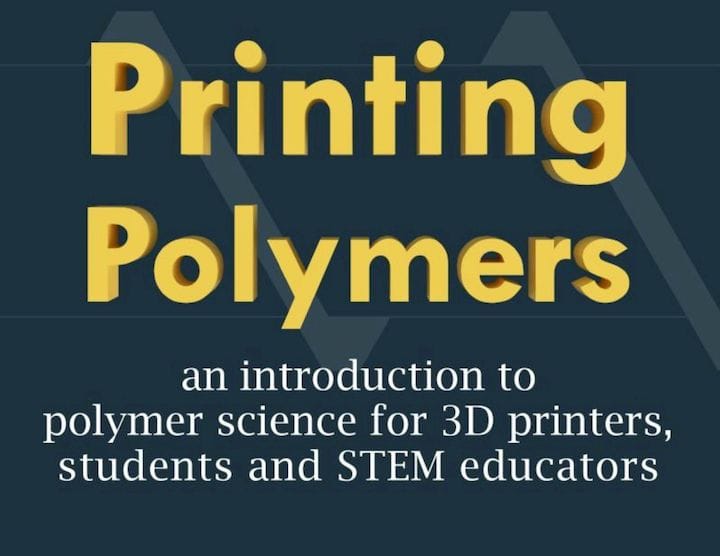![Everything you’d ever want to know about polymers [Source: Amazon]](https://fabbaloo.com/wp-content/uploads/2020/05/image-asset_img_5eb09e452a278.jpg)
This week’s selection is “Printing Polymers: An Introduction to Polymer Science for 3D Printers, Students and STEM Educators” by Curtis Barr and Daniel Vennerberg.
This is a fascinating book because it breaks a fundamental assumption that is all too often active among those first introduced to 3D printing. That assumption, which I’ve seen in almost every single person first exposed to 3D printing ,is that the object’s shape is everything, and that materials don’t matter.
The truth is far from this: objects perform as they do mainly because of their engineering properties when combined with the geometry of the object. You need both.
But unfortunately many, especially students, are overly enamored with the shape and ignore the physical properties necessary to make the object do what it’s supposed to do.
Material properties are incredibly important for any 3D printed object. Take temperature, for example. If the object is intended to be used within a certain temperature range, one must evaluate whether it retains its strength in that range. At higher temperatures materials can soften, decreasing strength. At lower temperatures, materials become more rigid and are susceptible to breaking upon impact. If the object is to be used in food preparation, then the material should be food safe — as must be the 3D printer that produced it.
But after reading this book, you will definitely have a far better understanding of polymer properties. It begins by explaining what polymers actually are, and how they are constructed using molecules.
Following that understanding, the book proceeds to explain all the common engineering properties that one might encounter when using polymers, including:
-
Density
-
Optical
-
Moisture content
-
Thermal
-
Mechanical stress
-
Rheology
-
Chemical resistance
You’ll learn how to read the specifications charts for 3D print materials and understand what “glass transition temperature” really means, for example.
The book has a very long section exploring all the common polymer families, including: PE, PP, TPO, PS, GPPS, HIPS, ABS, SBC, PMMA, PVA, PVOH, PVC, PA, PC, PET, PLA, EA and PU. I’m not even sure I know what some of these mean! Nevertheless, this is full coverage of both common thermoplastic and common thermoset materials.
The authors also explain the nature of commonly used additives in polymer materials for coloration, strengthening or other purposes.
Finally, the book explores how to relate all this detailed polymer knowledge against a given 3D printing project. They explain how to select the right material for the job by considering a number of different factors related to not only how the object must perform when produced, but also considerations of practical 3D printing.
This is a very different book that contains knowledge every 3D printer operator should be aware of. It will make your 3D prints better.
Via Amazon











This week’s selection is “3D Printing Projects” by Dorling Kindersley, a.k.a. “DK”.